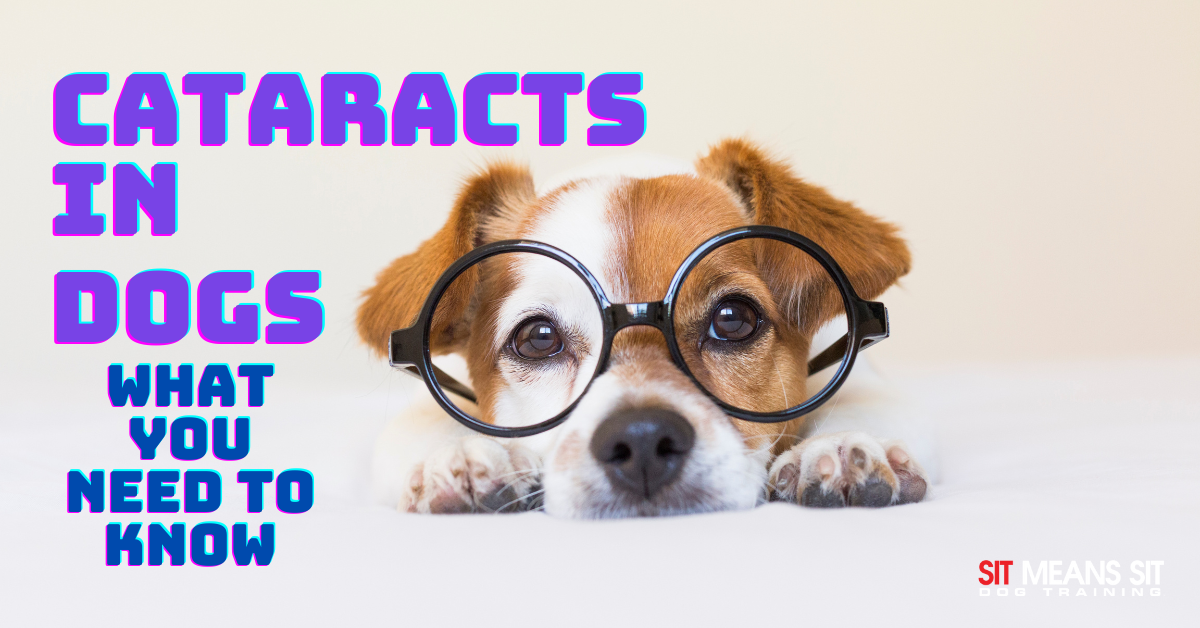
Everything You Need to Know About Cataracts in Dogs
Does your dog have cataracts? Or maybe you aren’t sure and you’re looking to learn more? Well, look no further because here is everything you need to know about cataracts in dogs.
What are Cataracts?
A cataract is an opacity, or a “clouding,” of the lens of the eye. The lens is supposed to allow light to shine through to the retina, which is how a dog can see. The lens is supposed to be crystal clear to allow light to shine through without any interference. However, a cataract can disrupt this process.
Cataracts come in many sizes. Some are so small they don’t disrupt vision at all, while others are so large they can cause extreme visual impairment.
To look for cataracts in your dog’s eyes, just look for a whiteness on the pupils in one, or both, of their eyes.
Classification
You may hear different words being thrown around to describe a cataract and its severity. These include:
- The age at onset
- Congenital – present at birth
- Juvenile – young dogs
- Senile – older dogs
- Anatomic location
- Causee
- Shape
- Degree of opaqueness – this can be broken down even further into the following
- Incipient – causes no vision loss and takes up less than 15% of the lens.
- Immature – Between 15 and 99% of the lens. Visual deficits are usually mild.
- Mature – Involves the entire lens and the retina cannot be seen during an examination. Visual deficits are significant, often with blindness detected.
- Hyper-mature – The lens begins to shrink and appear wrinkled
If a cataract takes up less than 30% of the lens or if only one eye is affected, it rarely will cause reduced vision. Once opacity reaches 60%, vision loss will start to become obvious, and at 100% opacity, the dog will be blind.
Breeds
Some breeds of dogs are more likely to be affected than others. The most common dog breeds to suffer from cataracts include:
- Welsh Springer Spaniel
- Yorkshire Terrier
- Siberian Husky
- Boston Terrier
- Miniature Schnauzer
- Miniature Poodle
- Labrador Retriever
- French Bulldog
- American Cocker Spaniel
- American Staffordshire Terrier
Glaucoma
Cataracts that dissolve without treatment can cause inflammation within the eye. Treatment is available via surgery but without treatment, your dog can develop glaucoma.
Glaucoma happens when fluid does not drain properly from your dog’s eye, causing an increase in pressure in the eye which can be very painful.
Not all cataracts will develop into glaucoma, but dogs who have glaucoma are often not candidates for cataract surgery.
Causes of Cataracts
The most common cause of cataracts in dogs is heredity. However, some other causes include:
- Old age
- Trauma
- Inflammation of the eye’s uvea
- Low blood calcium levels
- Nutritional deficiencies
- Exposure to UV light
Treatments
Once your vet has diagnosed your dog with cataracts, the only true treatment is surgery. There are currently no therapies to “cure” cataracts.
Since cataracts can continue to develop over time, if surgery is recommended to treat them, it is best to do it as soon as possible to prevent any further damage from being done to the eye.
Cataracts can be hard to deal with in pets, but in most cases do not cause the dog any pain and may not even cause changes in your pet’s vision! Keeping your dog’s eyes healthy is important, cataracts or not, so here are some tips to help your dog’s eyesight.
